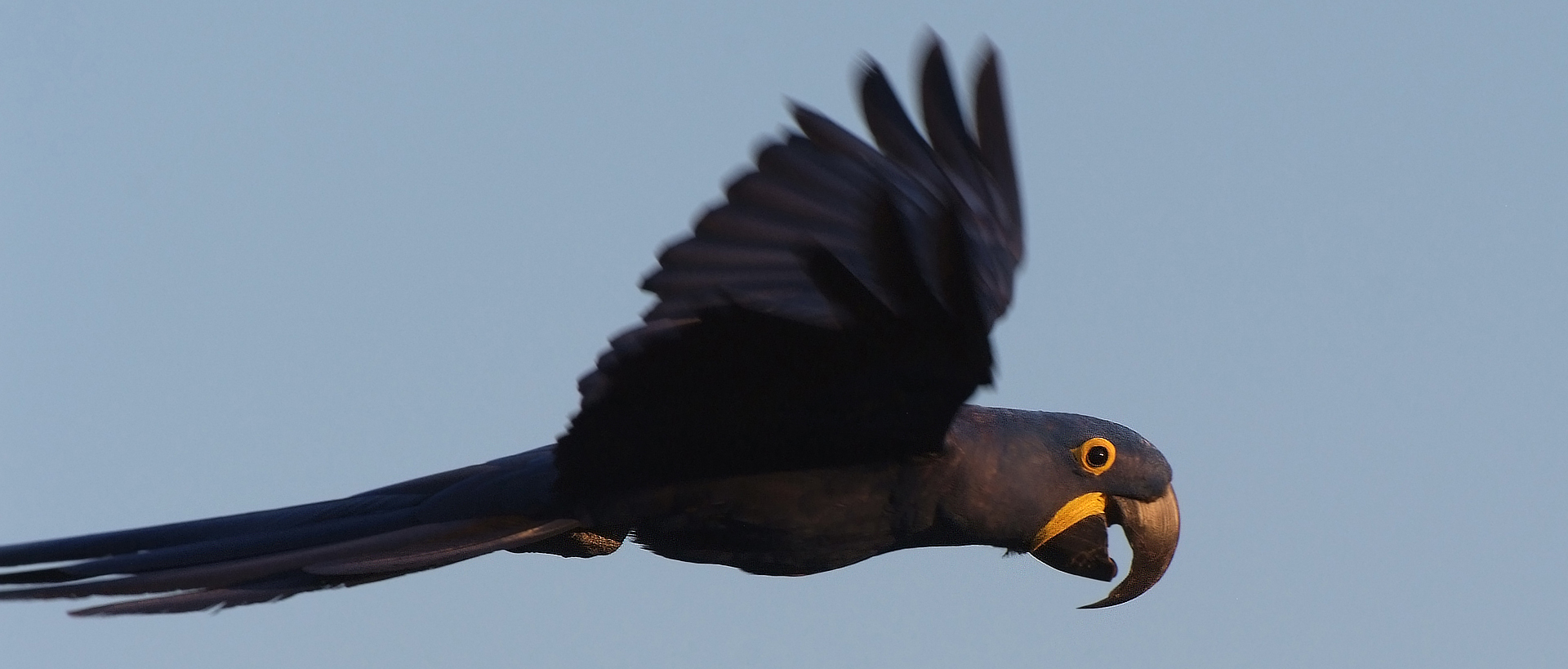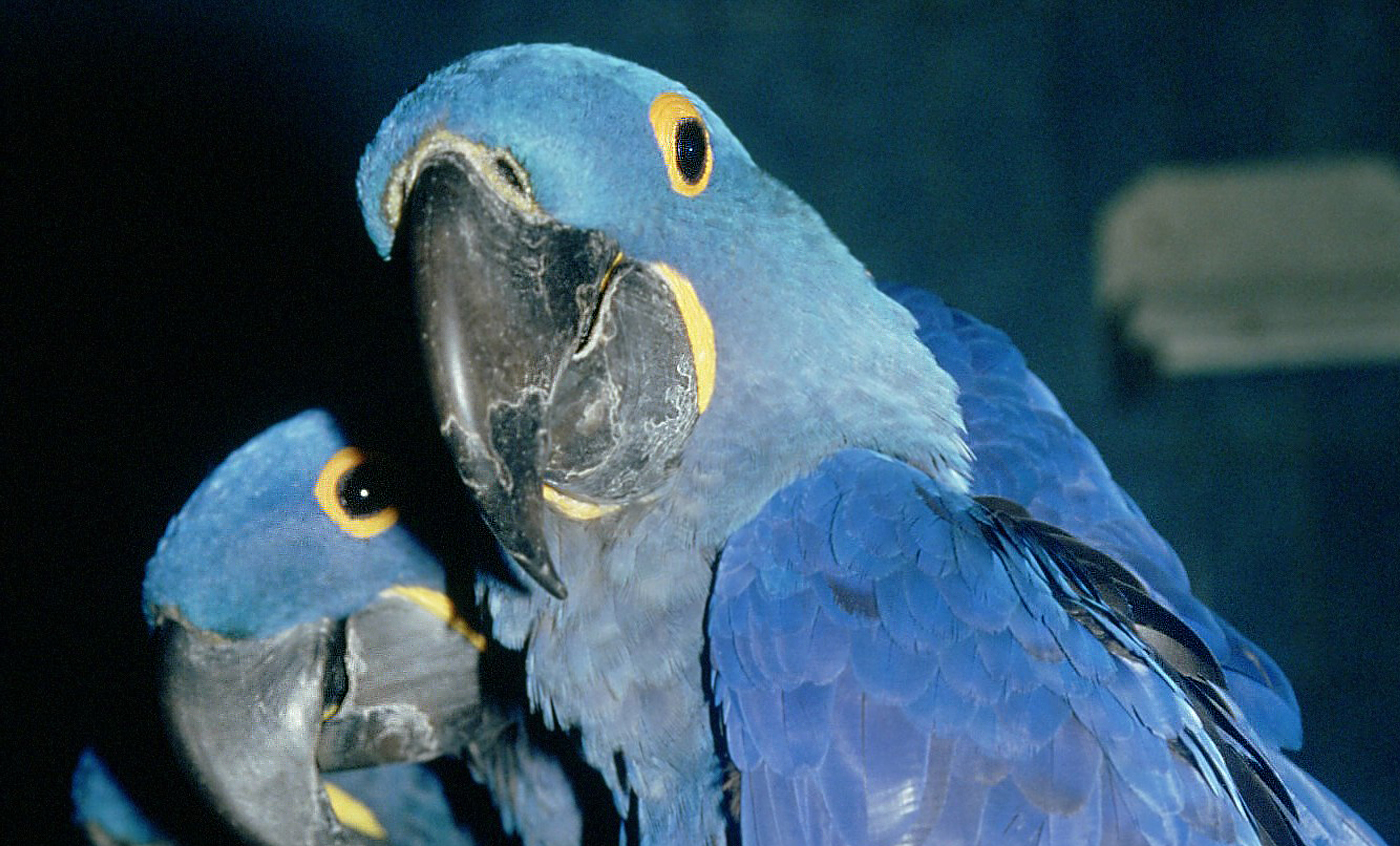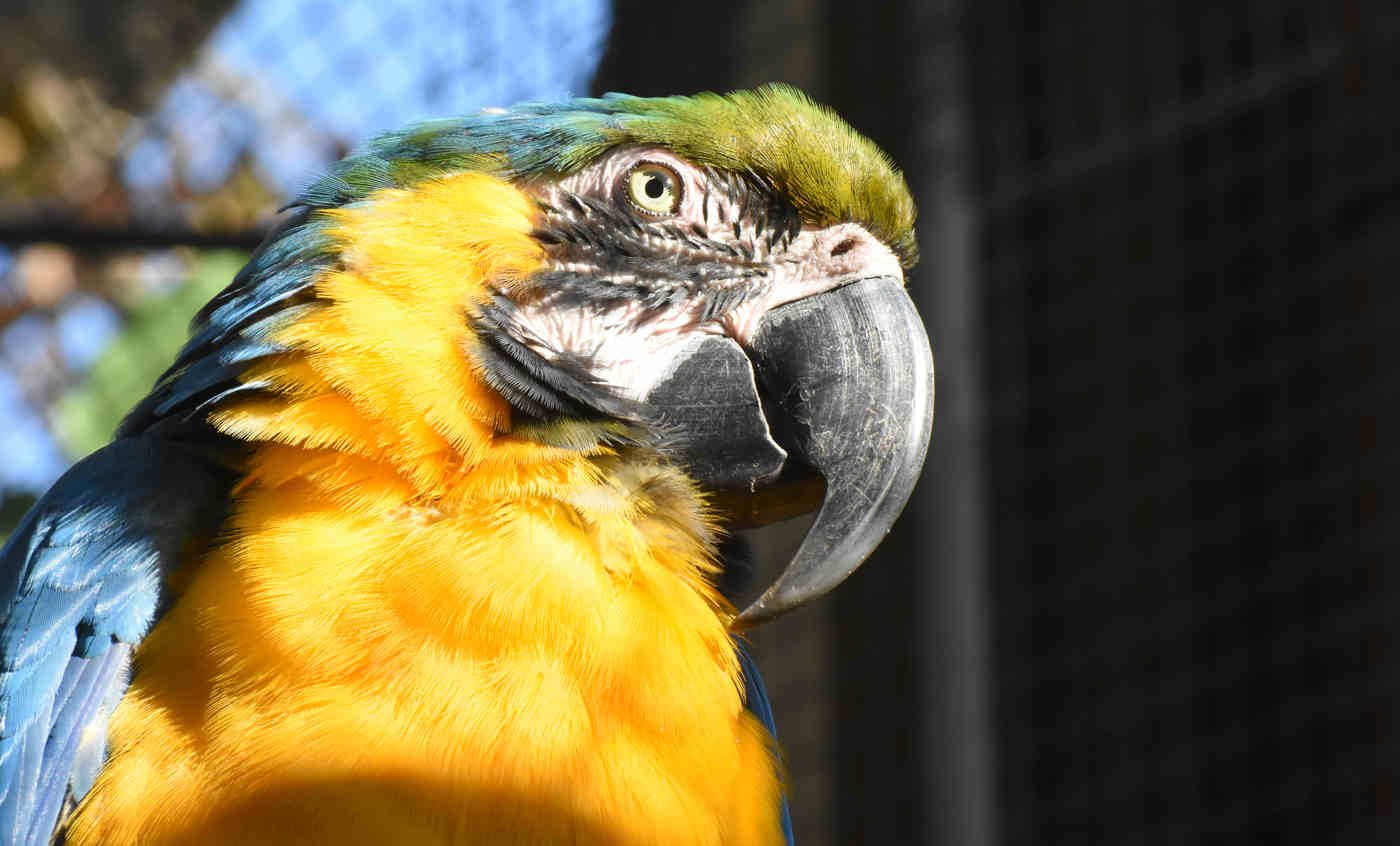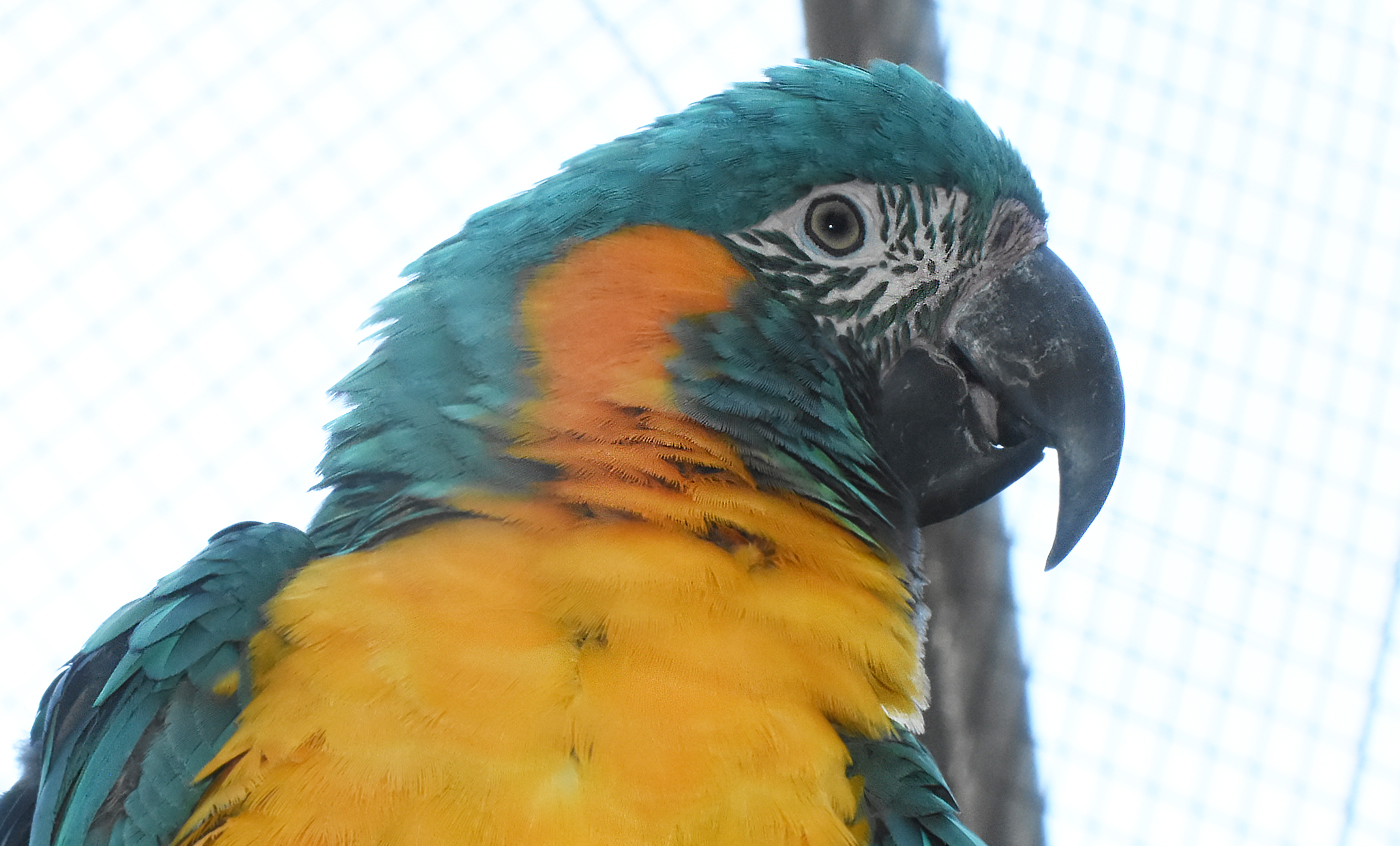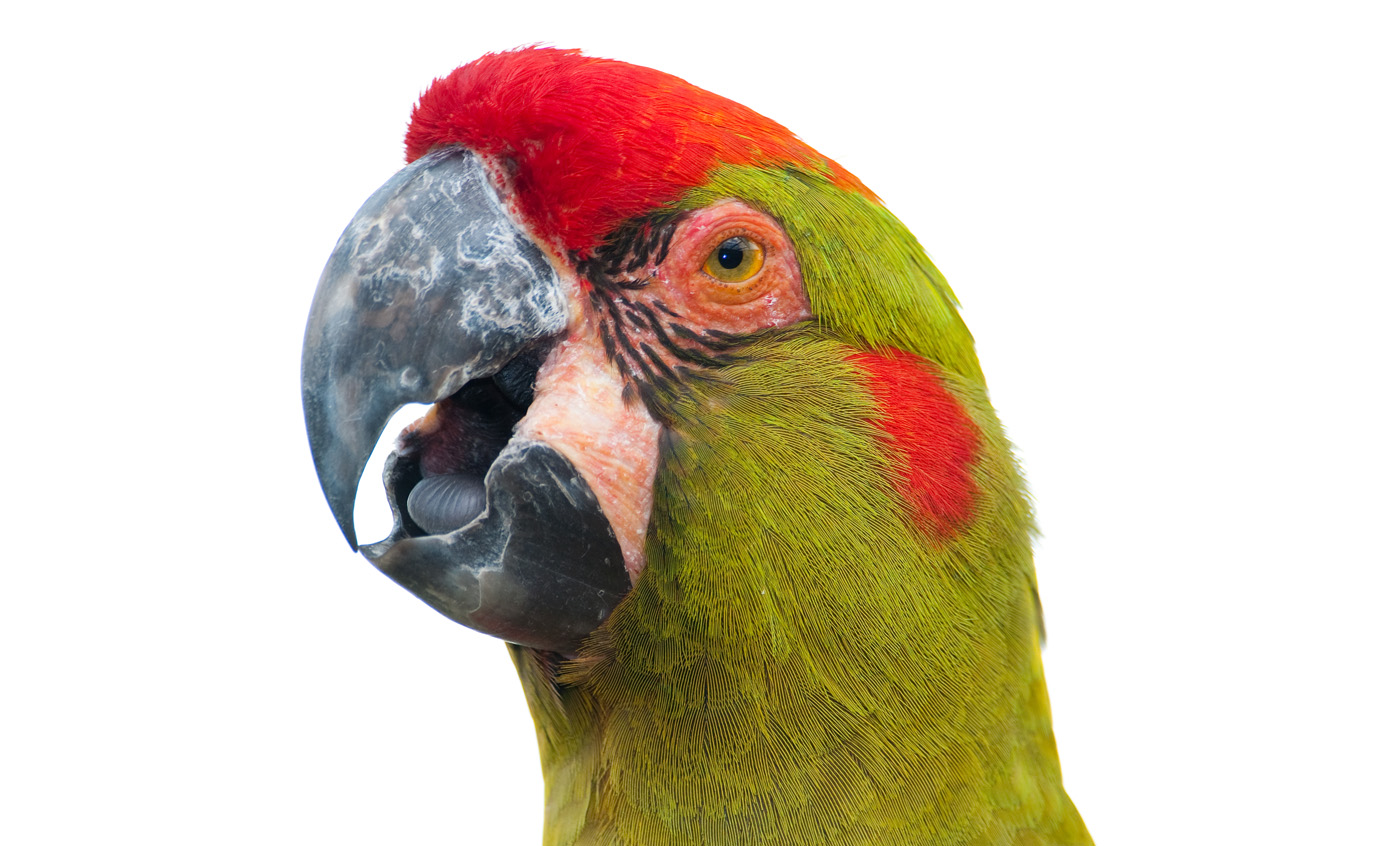Hyacinth macaw
This macaw is the largest of the parrot family and lives in the rain forests of central and southern Brazil. Its thick beak is ideal for breaking open the fruit of a palm tree that only grows in a very small area of Brazil, making it very easy to capture the bird, which is now in serious danger of extinction.
Natural habit
Brazil, Paraguay and Bolivia.
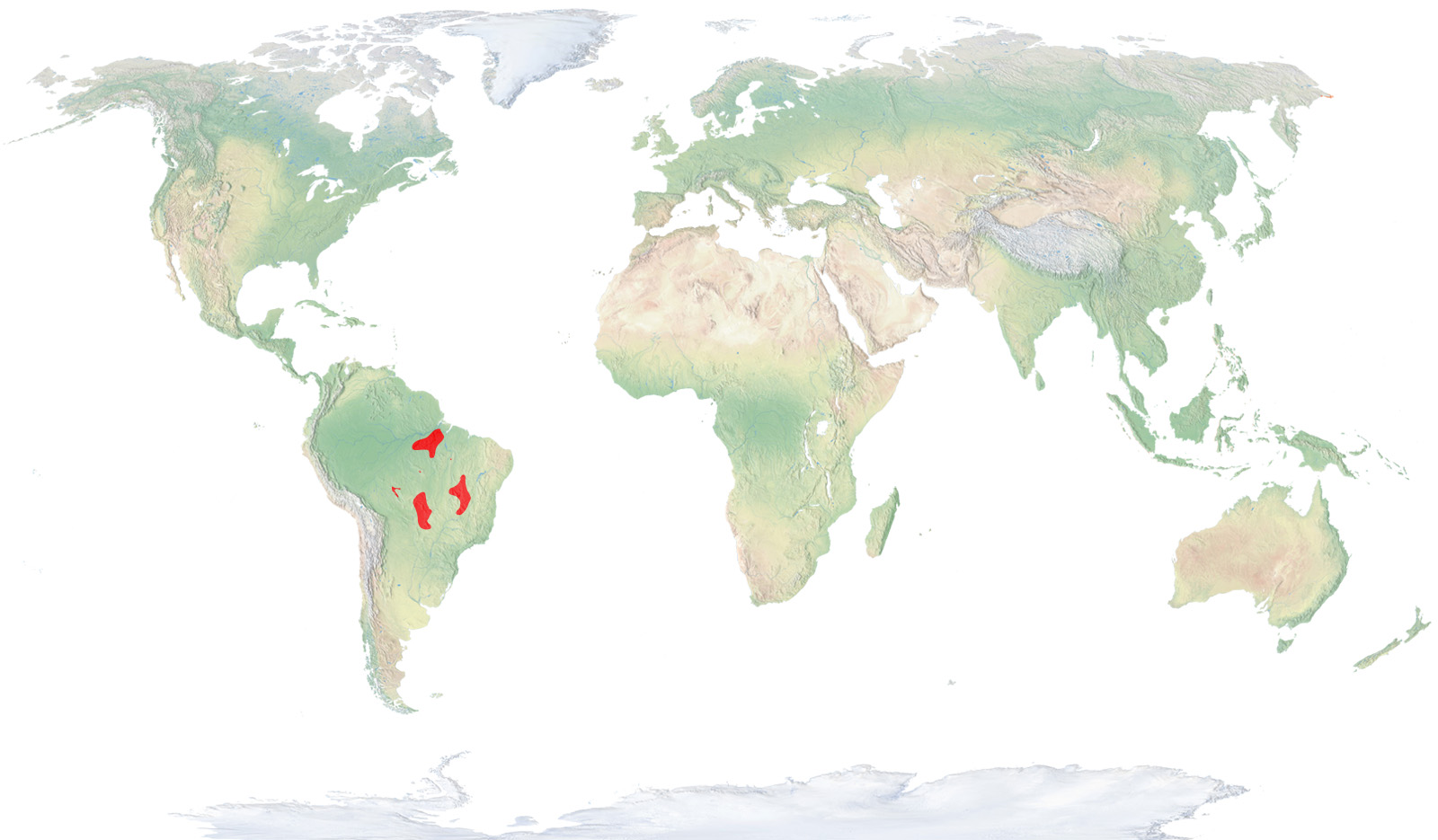
- Distribution / Resident
- Breeding
- Wintering
- Subspecies
Risk level
- Extint
- Extint in the wild
- Critically endangered
- In Danger
- Vulnerable
- Near threatened
- Minor concern
- Insufficient data
- Not evaluated
Taxonomy
Physical characteristics
Biology
Reproduction
Biology
The hyacinth macaw is the largest of all macaws, measuring up to one metre long and weighing more than 1.5 kg. With totally blue plumage that is darker on the wings, the side of the beak and a circle around the eyes are bright yellow. The strong and powerful beak is black and the tail is blue and longer than its entire body.
They live in savannahs and open woods in central South America, from central and southern Brazil to northern Paraguay and eastern Bolivia.
Basically frugivorous, they eat all types of fruits and seeds, even those protected by the hardest of shells, which they can easily crack open, thanks to their strong beaks.
They form stable pairs that stay together over the years and travel through a quite extensive territory throughout the year. They make nests in holes in trees, in which the female generally lays two or three eggs.
They travel in pairs or in small family groups, coming together in groups of several individuals in places where there is abundant food. They usually remain fairly close to flowing water and the surrounding wooded shores.
This species is in great danger of extinction due to the destruction of their habitat for increased crop lands, direct hunting and capturing the young for the illegal caged-bird trade.
The Barcelona Zoo participates in the EEP for this species.




